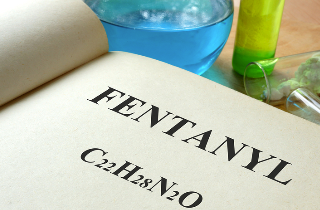Withdrawal from fentanyl (and other opiates) can begin in the first 24 hours following cessation of use. However, onset will depend on a number of individual factors that are based on your use patterns.
More here on fentanyl withdrawal duration, with a section at the end for your questions. In fact, we try to answer all legitimate questions personally!
Fentanyl basics and definition
Fentanyl is a strong opiate pain reliever, that produces the same effect as (but is much stronger than) heroin or morphine. It is typically prescribed or administered by medical professions to relieve pain following a surgery, or in situations of severe chronic pain.
The DEA has categorized fentanyl as a Schedule II drug, meaning it has some medicinal value but is dangerous in terms of its high abuse potential. Further, a version of this drug known as acetyl Fentanyl is now being identified in drug labs across the country, which is just as addictive but is not approved for medical use. Fentanyl is also known as:
- Apache
- Cash
- China girl
- China white
- Dance fever
- Friend
- Goodfella
- Jackpot
- Murder 8
- Tango
- TNT
Fentanyl works on opiate receptors in the brain
Fentanyl works by attaching itself to the opiate receptors in the brain. This increases the amount of dopamine in the brain, causing the user to feel “high”. However, it also has an effect on the parts of the brain responsible for some autonomic functions such as breathing, and too high of a dose can cause the user to stop breathing.
With continued use, the body gradually adjusts for and expects regular delivery of the drug. This is known as physical dependence. When the body stops getting the drug, it is left unprepared for “normal” functioning, causing some very unpleasant withdrawal symptoms.
NOTE HERE: Fentanyl dependence is different than addiction. While fentanyl’s addictive qualities are well documented, not everyone who uses this medication will become addicted to it. In fact, if you are taking fentanyl as prescribed, dependence is expected and can be treated via tapering protocols.
What are Fentanyl’s withdrawal symptoms?
Fentanyl produces withdrawal symptoms similar to any other opiate drug, including heroin, morphine, or prescription painkillers. The intensity of the withdrawal will depend on how long the Fentanyl has been used for, and what the dosage was, but symptoms they tend to be incredibly uncomfortable for the user. Fentanyl withdrawal will usually produce:
- anxiety
- chills
- extreme nausea
- gastrointestinal cramping
- insomnia
- irritability
- muscle and bone discomfort or pain
- restlessness
- sweating
When does Fentanyl Withdrawal Begin?
Withdrawal from fentanyl (and other opiates) can begin in the first 24 hours following cessation of use. Onset will depend on a number of factors, such as:
- Frequency of use
- Severity of physical dependence and
- The overall health of the user
After the first 24 hours, symptoms usually persist for another 2-3 days, and then taper off. However, recurrence of symptoms can persist for as long as six months.
Can Fentanyl withdrawal be fatal?
Withdrawal from fentanyl is usually not fatal in and of itself, but it does come with some fairly severe complications that could potentially be life-threatening. For example, suicidal thoughts are not uncommon with opiate withdrawal, and should be closely monitored. Further, a large danger comes with possible relapse.
After several days of not taking an opiate which you are physically dependent on, your body begins the process of returning to normal. If someone who has been attempting to detox goes back out and relapses, there is considerable risk of overdose, as the body is not physically prepared for the amount of a drug the addict is accustomed to using.
How can I withdraw safely and comfortably from Fentanyl?
Opiate withdrawal should always be done under medical supervision. Going through fentanyl detox at a hospital or detox facility will not only minimize dangers from health complications, but will allow the process to be as comfortable as possible. Symptoms will be monitored and both psychological and pharmacological treatments are available during withdrawal.
For example, there are several medications available that allow you to taper off fentanyl (or other opiates), such as buprenorphine, methadone, or naltrexone. These drugs should only be used, however, for tapering off with a plan agreed upon by you and your doctor, as they can cause physical dependence and withdrawal symptoms themselves.
Detoxing at home is always an option, but you may decide that inpatient addiction treatment, whether a simple detox or a 30+ day program, is the best option for you. Either way, you should consult with your doctor or another medical professional, to ensure that whatever route you decide on, you are not subjecting yourself to unnecessary risk or discomfort.
Fentanyl withdrawal questions
Do you still have questions about a safe withdrawal or the duration of fentanyl withdrawal? Please leave us your questions below. We’ll do our best to respond to you personally and promptly!









Related Posts